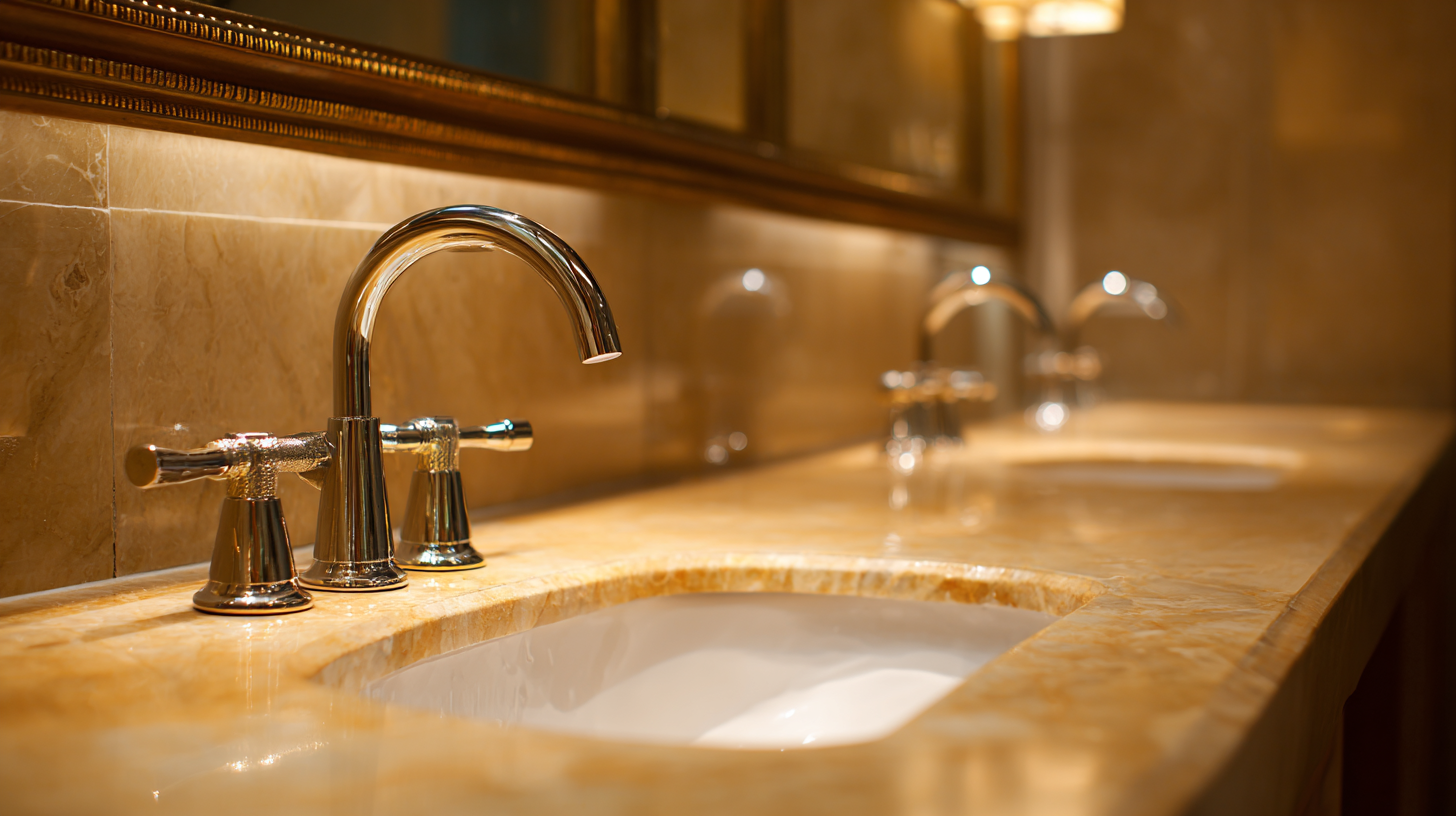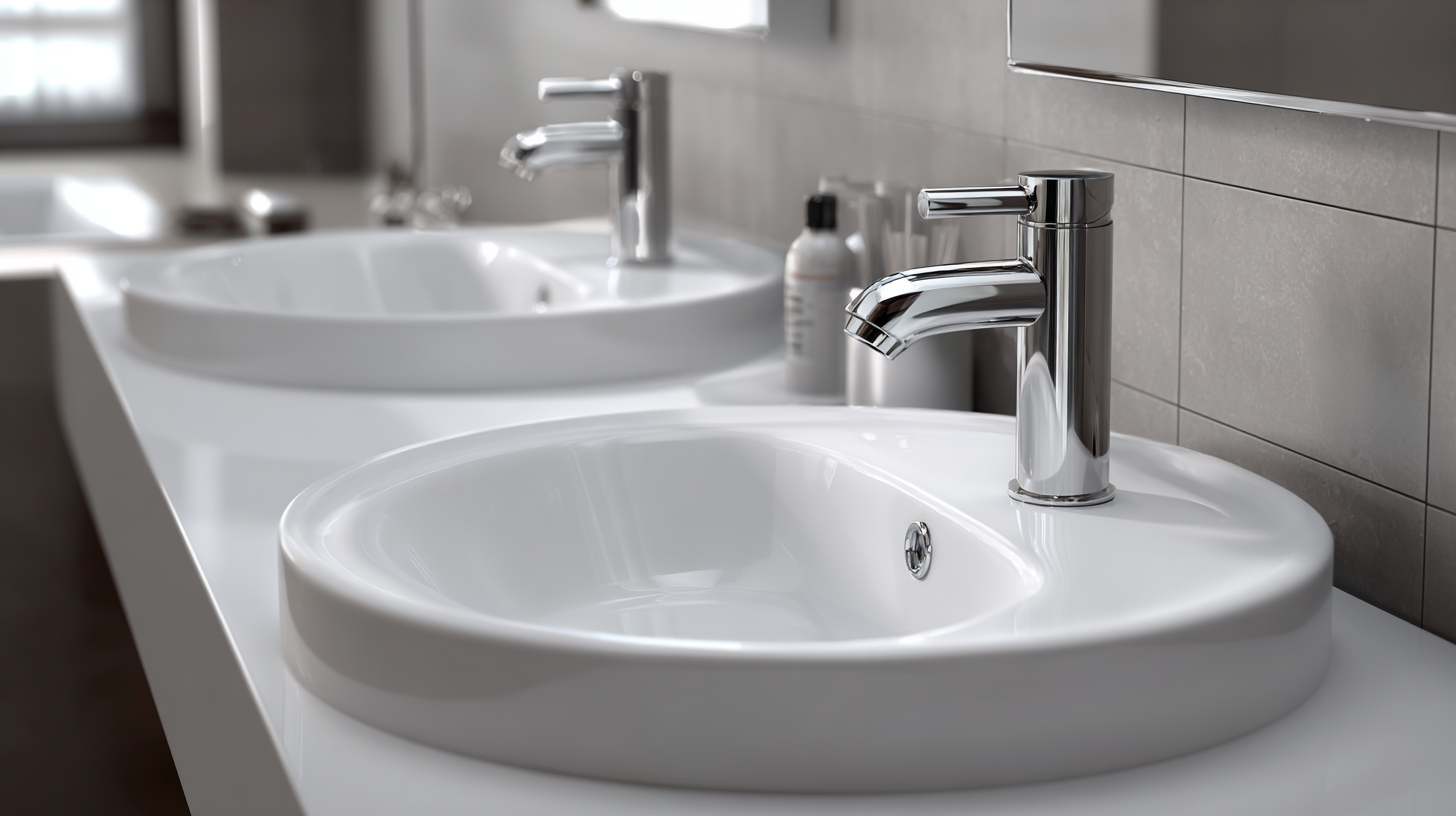Leave Your Message
In the ever-evolving world of interior design, the bathroom sink has emerged as a pivotal element, influencing both aesthetics and functionality. According to a recent report by Allied Market Research, the global bathroom sink market was valued at approximately $4 billion in 2020 and is projected to reach $6 billion by 2027, reflecting a significant growth trajectory driven by rising consumer demand for innovative designs and sustainable materials. As procurement professionals navigate this expanding market, selecting the right bathroom sink becomes crucial not only for enhancing the customer experience but also for meeting global sustainability standards.
This checklist-oriented guide aims to streamline your decision-making process, ensuring that you make informed choices that align with current trends and procurement strategies in the global marketplace.

When selecting bathroom sinks for global procurement, three key considerations come to the forefront: material, size, and style. The material of the sink not only affects its durability and maintenance but also its aesthetic appeal. Common materials include porcelain, stainless steel, and natural stone, each offering unique benefits. Porcelain is known for its classic look and ease of cleaning, while stainless steel provides a modern touch and exceptional resilience. Natural stone, on the other hand, introduces a luxurious element but may require more upkeep.
Size is another critical aspect to consider, especially when dealing with various bathroom layouts around the world. Standard sink dimensions can vary significantly, so it’s essential to assess the available space and ensure that the sink complements the overall design. Compact sinks work well in smaller bathrooms, while larger, double sinks can enhance functionality in family bathrooms.
Lastly, style plays a pivotal role in ensuring that the sink fits within the broader design theme of the bathroom. From sleek contemporary designs to vintage styles, the options are vast. A well-chosen sink can serve as a statement piece, elevating the overall aesthetic. Therefore, understanding the target market’s preferences and trends is imperative for successful procurement.
| Material | Size (inches) | Style | Weight (lbs) | Price Range ($) |
|---|---|---|---|---|
| Ceramic | 22 x 16 | Modern | 25 | 100-200 |
| Glass | 20 x 12 | Contemporary | 18 | 150-300 |
| Stainless Steel | 24 x 18 | Industrial | 30 | 200-400 |
| Composite | 26 x 15 | Transitional | 20 | 120-250 |
| Natural Stone | 30 x 20 | Rustic | 50 | 400-700 |
In recent years, the global procurement landscape for bathroom fixtures has undergone significant transformations, driven by changing consumer preferences and sustainable practices.
According to a report by MarketsandMarkets, the bathroom fixtures market is projected to reach USD 112 billion by 2026, growing at a CAGR of 6.5% from 2021. This surge highlights the increasing demand for innovative designs and eco-friendly materials that align with contemporary lifestyles.
Notably, sustainability has emerged as a key trend influencing purchasing decisions. A survey by the National Kitchen & Bath Association (NKBA) found that over 70% of consumers are willing to pay more for eco-friendly products. This shift not only encourages manufacturers to invest in sustainable technologies but also pushes procurement professionals to prioritize suppliers who adhere to ethical sourcing practices.
With such a dynamic market environment, understanding these trends is crucial for making informed decisions that not only enhance aesthetic appeal but also support the global move towards sustainability in the bathroom fixtures sector.
When it comes to selecting bathroom sinks for global procurement, navigating international regulations and standards is a crucial step in the process. Each country has its own set of requirements that directly influences product design, material usage, and safety standards. For instance, sinks exported to the European Union must comply with CE marking regulations, ensuring they meet health and safety criteria. Similarly, in North America, products must adhere to standards set by organizations like the American National Standards Institute (ANSI) and the International Plumbing Code (IPC), which address aspects such as water efficiency and drainage specifications.

Understanding these regulations not only helps in compliance but also ensures that the products meet consumer expectations and legal requirements in target markets. It’s essential for procurement teams to conduct thorough research into the specific regulations of each destination country. This includes knowing how local standards impact manufacturing processes, and testing requirements to ensure the quality and reliability of bathroom sinks. By prioritizing regulatory compliance and staying informed on international standards, businesses can confidently expand their product offerings and foster trust with customers in diverse markets.
When it comes to selecting bathroom sinks for global procurement, cost-effectiveness is a crucial factor that can significantly influence your decision-making process. Budgeting effectively ensures that you make informed choices without compromising on quality. Start by evaluating the various sink materials available, such as porcelain, stainless steel, and composite. Each material comes with its own price range and durability factors, so understanding the long-term value can help you justify initial costs.
In addition, consider the shipping and import fees associated with sourcing sinks from different regions. These costs can vary greatly depending on the supplier's location and the sink's weight. To maximize your budget, establish relationships with reliable suppliers who offer competitive pricing and can provide bulk discounts. Leveraging technology, such as procurement software, can also help you keep track of expenses and streamline the purchasing process, ensuring that you’re always staying within budget while meeting global needs.
When it comes to sourcing bathroom sinks globally, finding reliable suppliers is crucial to ensure product quality and timely delivery. Start by thoroughly researching potential suppliers online. Platforms like Alibaba, Global Sources, and ThomasNet can provide a wide range of options. Look for suppliers with verified credentials and positive reviews from previous customers. This will give you confidence in their ability to meet your procurement needs.
One effective tip is to request samples before placing large orders. This allows you to assess the quality of the sinks firsthand and ensures they meet your standards. Additionally, don’t hesitate to ask for references from other clients to gauge the supplier's reliability. Building a strong relationship with suppliers can also facilitate better communication and smoother transactions, making it easier to resolve any issues that arise during the procurement process.
Consider diversifying your supplier base to mitigate risks. Relying on a single supplier can lead to complications if unforeseen circumstances arise, such as delays or quality issues. By having multiple sources, you maintain more control over your supply chain, ensuring that you can consistently meet your project's demands while exploring various designs and materials for bathroom sinks.

